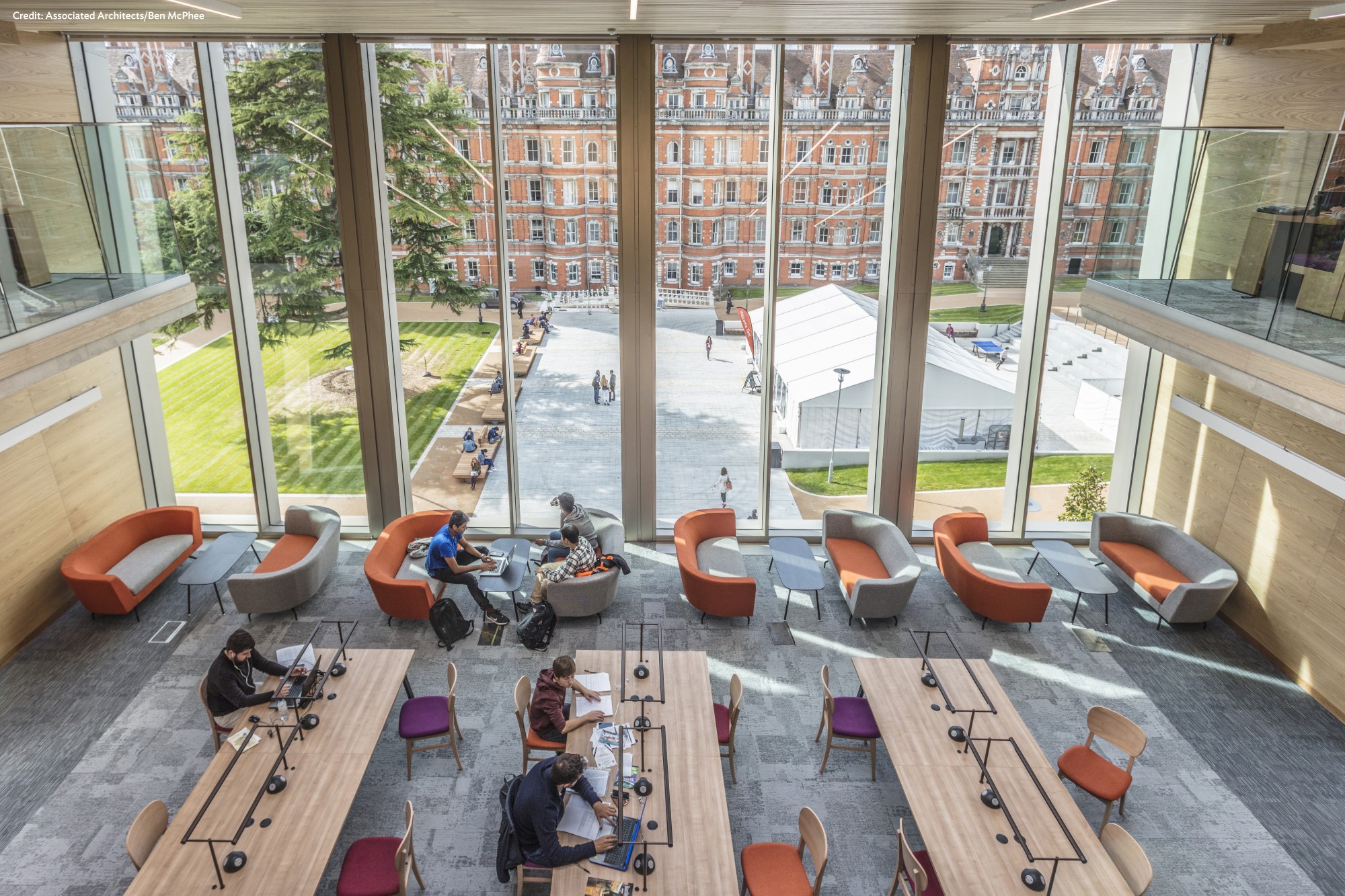The multi-functionality of fire safety glass: creating acoustically sound spaces
Thanks to the multi-functionality of fire safety glass, fire protection can be just the start of a specification – something that becomes key when you consider how acoustics is becoming an increasing priority within building design.
Here, Andy Lake, Pyroguard’s Sales Director UK & IRE, explores the role fire safety glass can play in helping to reduce the effects of noise.

Noise pollution, defined as any sound above 65 dB[i], has been described by scientists as a ‘silent threat’, with environmental sound known to have a range of adverse effects on those nearby. This is of no surprise, with research[ii] showing that in office environments, even one nearby conversation can reduce an employee’s productivity by up to 66%. Not only this, but repeated exposure to loud sounds above 70 dB can result in increased stress levels and impact on the general health and wellbeing of a worker, with the worst-case scenario even being noise induced hearing loss with sounds above 120 dB.
Whilst some architects may look to combat this by sectioning off different areas and using solid walls to minimise the spread of noise, there is a better and more aesthetically pleasing option available to them in glass partitioning.
Fire rated safety glass and its multi-functional properties
Fire rated glass is often overlooked as a solution for noise transfer, due to its primary role as a fire safety product, however, many fire safety glass solutions can actually double-up in an acoustic control capacity, thanks to their thick pane sizes and multiple interlayers. This multi-functional capability – enabling fire safety glass to not only be used in its intended role as a fire safety solution, but also as an acoustic barrier – makes it the ideal solution for architects and specifiers who have been tasked with creating safe and acoustically sound spaces.
This ability to do both jobs can benefit a range of applications and environments, with offices, airports, glazed atriums, recording studio partitions or even skylights all viable applications for fire safety glass as an acoustic barrier.
Acoustic values to consider
When looking at an acoustic solution for these applications, it is important to understand the numbers and figures to look out for. The main figure to pay attention to, when judging acoustic glass, is its Weighted Sound Reduction Index (Rw Value) – this measures how much a material can reduce sound by, with a higher Rw Value meaning better acoustic control. For example, in an open-plan office environment where the normal conversation volume is around 60 dB, a 30 Rw glass partition could be installed to help bring the volume down in an adjacent area to 30 dB – which is around the same level as the average whisper. It’s important to remember that the Rw Value is measured in decibels, meaning increasing the Rw value of the partition by one correlates to a decrease in sound level of one dB.
But what affects the Rw Value of a glazing system? The Rw Value of a glass product depends on a variety of factors, with pane thickness, glass density, space between each pane and the number of interlayers all playing an important part in increasing the value. For example, a thicker pane of glass with a thicker interlayer will have a better Rw Value, with each interlayer added further increasing the level of sound attenuation. Of course, safety is a critical consideration too. With this in mind, it is possible for architects to combine a fire safety rating with their desired Rw rating, for example Pyroguard Protect, a toughened gel-filled glazing system capable of providing Rw Values of up to 55 with a fire insulation (EI) rating of 60.
This concept can be applied to many different examples, where fire protection, impact resistance and acoustic performance is key. In airports, where the average plane taking off registers at 140 dB, well over the 85 dB level where ear protection is recommended, a high Rw Value glass should be used. However, at the same time there also needs to be an effective fire safety glass system capable of providing fire, smoke and impact resistance in place to ensure the safety of all passengers and staff using the space.
This simple, yet effective glazing specification can enable building occupants to go about their day without the negative effects associated with excess noise. In addition to this, an architect still has the ability to choose from a variety of glass design choices and can therefore maintain a clean and contemporary look – retaining the aesthetic value of a project.
Fire rated safety glass: a practical and effective solution
By working with experienced providers in the market, such as Pyroguard, architects and specifiers can better harness the multi-functional power of fire safety glass, obtaining bespoke solutions that are manufactured with their required Rw Value in mind, as well as taking into account the safety needs of a project. Ensuring their spaces aren’t just fire safe but are also acoustically sound, without sacrificing on aesthetics.
Find out more about this, please contact us.
[i] https://www.iberdrola.com/sustainability/what-is-noise-pollution-causes-effects-solutions#:~:text=WHAT%20IS%20NOISE%20POLLUTION%3F,is%20painful%20above%20120%20dB.
[ii] https://resonics.co.uk/12-ways-noise-affects-employee-wellbeing-health-productivity/#:~:text=Productivity%20Can%20Plummet%20When%20It’s%20Noisy.&text=Workers%20can%20be%20up%20to,to%20just%20one%20nearby%20conversation.
